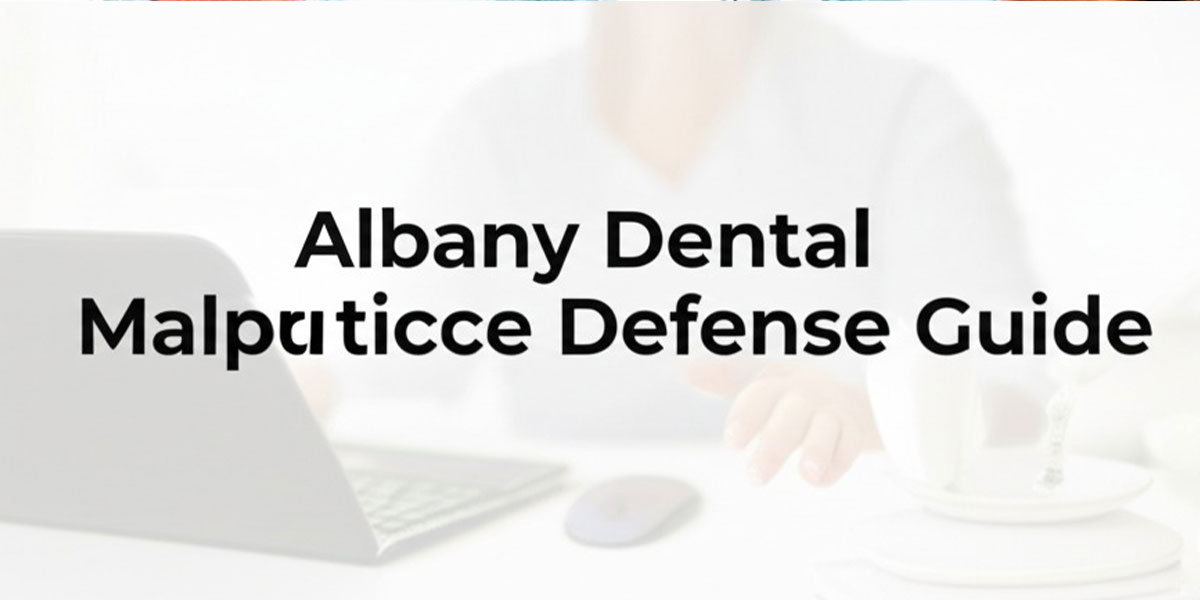Protecting Your Dental Practice in Albany from Malpractice claims
as a respected dentist practicing in Albany, New York, you have dedicated your professional life to delivering top-notch patient care, establishing a reputable practice, and achieving success. The demand for high-quality dental services in the region is ample, and your commitment to excellence serves as the cornerstone of your business. However, even the most skilled and diligent practitioners are not immune to the risk of facing a dental malpractice lawsuit. In today’s litigious society,a single claim—regardless of its validity—can put your license at stake,tarnish your reputation,and lead to important financial and emotional strain. Understanding the legal landscape surrounding dental malpractice in New York is crucial not only for professional responsibility but also as an integral part of a thorough risk management strategy aimed at safeguarding your life’s work.
With over 30 years of experience as an attorney in New York State focusing on asset protection through estate planning and business succession strategies,I have witnessed how legal issues can unexpectedly disrupt thriving enterprises.While my primary area of expertise lies in asset protection planning, the principles of risk mitigation apply universally. A malpractice claim poses a direct threat to the value and sustainability of your dental practice as a basic asset. Therefore, adopting a proactive defence approach is imperative. This guide aims to offer Albany dentists an extensive overview of New York’s laws pertaining to dental malpractice by outlining key elements that plaintiffs must establish and emphasizing strict statutes of limitations. Furthermore, it provides practical advice on documentation practices, effective patient communication strategies, informed consent procedures—all geared towards fortifying your practice against potential claims.
Understanding Dental Malpractice Laws in new York
A dental malpractice lawsuit constitutes a specific type of negligence claim that requires plaintiffs to prove four distinct elements by preponderance of evidence—a standard frequently enough referred to as the “Four D’s”of negligence—to succeed in thier case:
- Duty: Establishing that there was indeed a dentist-patient relationship where you owed the patient professional care.
- Dereliction (or Breach) Of Duty: Demonstrating failure to meet accepted standards within similar circumstances.
- Direct Causation (or Proximate Cause): Proving that breach directly caused harm or injury.
- Damages: showing tangible harm or losses resulting from said injury.
This legal framework is governed by statutes and case law defining healthcare providers’ responsibilities—a foundation upon which patient trust and legal defensibility rest for every albany-based dental office. Understanding these obligations thoroughly is essential for all team members—from receptionists to clinicians—as any lapse along the continuum could potentially expose vulnerabilities within patient care protocols.
Key Elements Required for Dental Malpractice Claims
To successfully pursue a malpractice claim against you as a dentist practicing in Albany NY or elsewhere within New York State requires proving all four critical points outlined below:
- Duty:The plaintiff must first prove that there was indeed an established dentist-patient relationship where you owed them professional care.
- Breach Of Duty: The core element requiring proof involves demonstrating failure on your partto meet accepted standards under similar circumstances.
- Causation: The plaintiff must then establish that any breach directly ledto their injury.
- Damages: The final element necessitates proving actual harm or losses suffered due
To said injury.< / ol>
NewYork’s Statuteof LimitationsforDentalMalpractic e
< / h4 >
< p > A critical aspectofdefendingagainstmalpractic e casesis understandingthe statuteoflimitations.Thislawimposesastric t timelimitonapatient’ s righttofileasuit.InNewYork,pursuanttoCivilPracticeLaw&Rules(CPLR)§214-a,apatientgenerallyhas twoyearsandsixmonths fileadentalmalpracticelawsuit.Thistimeperiodtypicallycommencesfromthedateoftheallegedmalpract ice(the“actoromission”)orendsofacontinuouscourseoftreatmentforth esamecondition.Therearesomeexceptions,suchasthe“foreignobject”rulewhichallowsacas etobefiledwithinoneyearofdiscoveringanobjectleftinapatient’ sbod y.Adherencetothesedeadlinesiscrucial,andacasefiledevenonedaylatecanbedismissed.Thi slegalprincipleunderscores
Theimportanceo fassetprotectionstrategiesanareawhereforward-thinkingo fNewYorkestateplanningprovidesvaluableparallelsforbusinessowners.< / p >< h3class= " wp - block - heading ">ProactiveStrategiestoMitigateMalpra cticeRisk
< / h3 >
< p > The mosteffectivewaytodefendagainstm alpractic e claimsisto preventthemfromeverbeingfiled.Aproactiveriskmanagementprogramembeddedinth edailyoperationsofyour practiceisthebestdefensestrategy.Thisentailsmorethanjusthaving liabilityinsurance.itrequiresadevotiontometiculousrecord-keeping,c learcommunication,andaculture o fpatientsafety.Thesestrategiesnotonlyreduceyourlegalriskbutalsoenhancepatienttrustandimproveclinicaloutcomes,st rengtheningyourreputationasa premierdentistAlban y residentscanrelyon.
Findus here< /a>)These proactive stepsconstituteabusinessassetprotectionmechanism,aconceptwell-knownamongexpertsincraftingwillsandtruststosafeguardwealth.< / p >Enhancing Risk Management in Dental Practice
When running a dental practice, it is crucial to prioritize risk management strategies to protect both your patients and your business. by implementing thorough protocols and procedures, you can mitigate potential legal issues and safeguard your professional reputation. Here are some key areas to focus on:
comprehensive Documentation Practices
- Detailed Patient Records: Maintain accurate and detailed records of all patient interactions, treatments, and follow-up care.this documentation serves as a crucial reference point in case of any disputes or claims.
- Records of All Communications: Keep track of all communications with patients, including phone calls, emails, and in-person conversations. This level of detail can provide valuable evidence in case of any misunderstandings or complaints.
Thorough documentation not only ensures transparency but also helps build a strong defense against any allegations of negligence. just like how probate courts rely on meticulous records for estate execution, trial courts depend on your documentation to understand the care provided.
Informed Consent: Building Trust Through Communication
Informed consent is not just a legal requirement but also a vital risk management tool.Engaging in meaningful dialog with patients about treatment risks, benefits, and alternatives is essential for building trust and managing expectations. Documenting these discussions in patient charts can help prevent misunderstandings or surprises if complications arise post-treatment.
This process fosters transparency and trust between practitioners and patients. It is crucial to ensure that informed consent processes align with state-specific requirements to avoid legal complications down the line.
Structuring Your Practice for Asset Protection
Besides clinical protocols, the legal structure of your dental practice plays a significant role in risk management. Establishing the right business entity can shield personal assets from professional liabilities such as malpractice claims.Consulting with legal experts can help you navigate the complexities of structuring your practice for enhanced asset protection.
The Importance of Adequate Malpractice Insurance coverage
- Adequate Coverage: Ensure that you have appropriate malpractice insurance coverage tailored to the scope of your practice.
Review policy limits regularly with insurance brokers to guarantee sufficient protection against potential claims.Understand different types of policies (e.g., occurrence vs claims-made) to choose the most suitable option for your practice needs.
Consulting with legal advisors can help you make informed decisions regarding insurance coverage tailored specifically for dental practices.
maintaining adequate malpractice insurance coverage is essential for protecting both your professional reputation and financial well-being.Navigating Legal processes When Faced With Claims
If faced with a malpractice claim from a patient’s attorney or formal summons,
contacting malpractice insurance carriers instantly
is critical within 24 hours after receiving notice
to assign defense attorneys who will guide you through litigation processes effectively.
Avoid direct communication with patients’ attorneys
and refrain from altering patient records post-claim notification,
as these actions may compromise credibility during legal proceedings.Your assigned defense team will work diligently through discovery processes,
settlement negotiations,
and potentially trials if necessary,
relying heavily on detailed records maintained throughout patient interactions.Seeking guidance from experienced legal professionals during such challenging times
can provide peace-of-mind while navigating complex litigation procedures effectively.The Role Of Effective Patient Communication In Conflict resolution
Many lawsuits stem from miscommunication or unresolved conflicts between practitioners
and their patients Implementing clear communication protocols
for handling patient complaints proactively
can prevent escalation into formal litigations.Listening empathetically
investigating concerns thoroughly
and communicating findings compassionately are key steps towards resolving conflicts amicably without admitting faultPrioritizing effective communication strategies not only enhances patient satisfaction but also safeguards professional reputations
This emphasis on clear communication skills transcends industries
as successful professionals across various fields understand its significance alongside technical expertiseBy focusing on comprehensive risk management strategies such as thorough documentation practices informed consent procedures strategic business structuring adequate insurance coverage proactive conflict resolution tactics dental practitioners can safeguard their practices against potential risks while maintaining high standards professionalism integrity within their fieldProtecting Your Practice: A Comprehensive Guide to Managing Legal Risks
In today’s fast-paced world, healthcare professionals face a myriad of legal challenges that can impact their practice. From dental malpractice claims to probate proceedings, it is crucial for practitioners to be proactive in managing these risks. One of the most effective ways to mitigate legal issues is by building strong relationships with patients.
Connecting with patients on a personal level not only improves the overall patient experience but also serves as a form of risk management. By fostering trust and open communication, practitioners can prevent misunderstandings and potential disputes down the line. This simple yet powerful strategy can save time and money in the long run.
For those looking for additional support in navigating legal matters, seeking guidance from experienced attorneys is highly recommended. A consultation with legal experts can provide valuable insights into potential risks and how to address them effectively. In Florida, reaching out to a local law firm specializing in healthcare law is a wise decision.
Whether you are dealing with dental malpractice issues or probate proceedings, taking proactive steps to protect your practice is essential. By prioritizing patient relationships and seeking professional legal advice when needed, practitioners can safeguard their livelihoods and ensure long-term success.
For more information on managing legal risks in the healthcare industry, check out our comprehensive guide on Albany Dental Malpractice Defense. Stay informed and stay protected.
The post Protecting Your Practice: A Comprehensive Guide to Managing Legal Risks appeared first on lawyer.bet.




